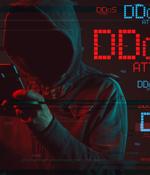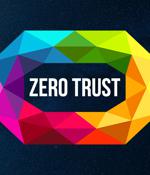Security News

Optiv has published a report based on a recent survey of cybersecurity leaders that highlights the critical importance of implementing zero trust as an effective way to reduce cyber risk. Respondents cited zero trust as one of the most effective security practices, and 100% acknowledged it as important in reducing their organization's cyber risk.

Zero trust adoption will continue to mature, with 78 percent of firms planning to bolster zero trust security operations in the new year. Implementing zero trust technologies can address emerging security gaps, but most enterprises are still in early stages of adoption.

Perimeter 81's cloud-delivered, user-friendly platform offers a seamless SaaS interface with a feature-rich experience including built-in SSO and 2FA integrations. Perimeter 81's self-service portal allows organizations to create, deploy and scale their secure network infrastructure and business applications quickly and without friction.

Some vendors have even begun to claim these measures as a form of Zero Trust, a popular idea where organizations should not trust any entity and provide access to its applications and data until its risk levels are verified. While most of us understand Zero Trust conceptually, the path to Zero Trust is a complex and constantly evolving journey.

Like many concepts in cyber-security, Zero Trust has come to prominence recently. The concept is reckoned to have first been used in the mid-1990s, though it came to prominence around 2010 and has really started to take off in the past three years or so.

More than 70 percent of federal agencies are aggressively adopting zero trust principles, while another 26 percent are adopting where they feel it makes sense, according to a Merlin Cyber and MeriTalk report. The report is based on a survey of more than 150 federal cybersecurity decision makers and explores the priorities, goals and anticipated challenges around the federal government's zero trust implementations.

The consequence of a Log4Shell attack is that the exploited server tries to download code from an internet site owned by the attacker. Even if a Log4Shell vulnerability is exploited in the server, it cannot download and later run any malicious code, as the outgoing traffic from the DMZ to the internet would have been prohibited.

A newly released Federal strategy wants the US government to adopt a "Zero trust" security model within the next two years to defend against current threats and boost cybersecurity defenses across federal agencies. The executive order initiated a government-wide effort to migrate toward zero trust and modernize the nation's defenses against cyberattacks.

Amid the COVID-19 crisis, the global market for zero-trust security estimated at $18.3 billion in the year 2020, is projected to reach a revised size of $64.4 billion by 2027, growing at a CAGR of 19.7% over the period 2020-2027, according to ResearchAndMarkets. On-Premise, one of the segments analyzed in the report, is projected to record 19% CAGR and reach US$39.

Baby Boomers play a critical role in accelerating zero trust security frameworks due to experience in integrating legacy technologies into cloud and hybrid IT environments, an Appgate study reveals. The study, based on desk research and in-depth focus groups conducted by prominent intergenerational issues author and speaker Henry Rose Lee, examines differences between Baby Boomers, Gen-Xers and Millennials and ways to harness individual strengths to develop more effective cybersecurity strategies.